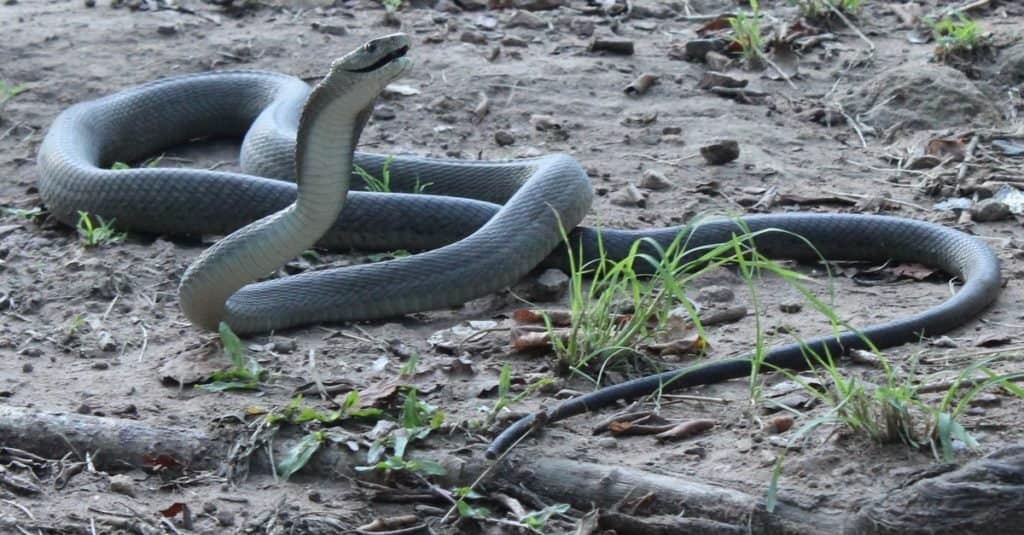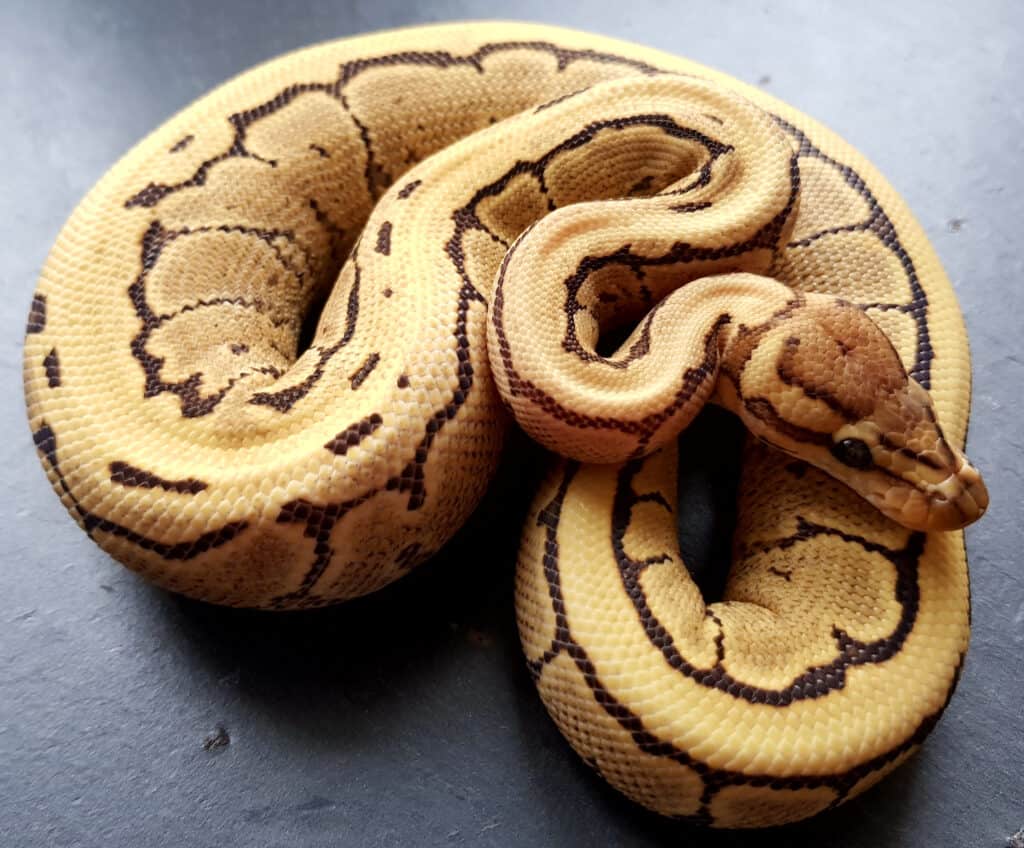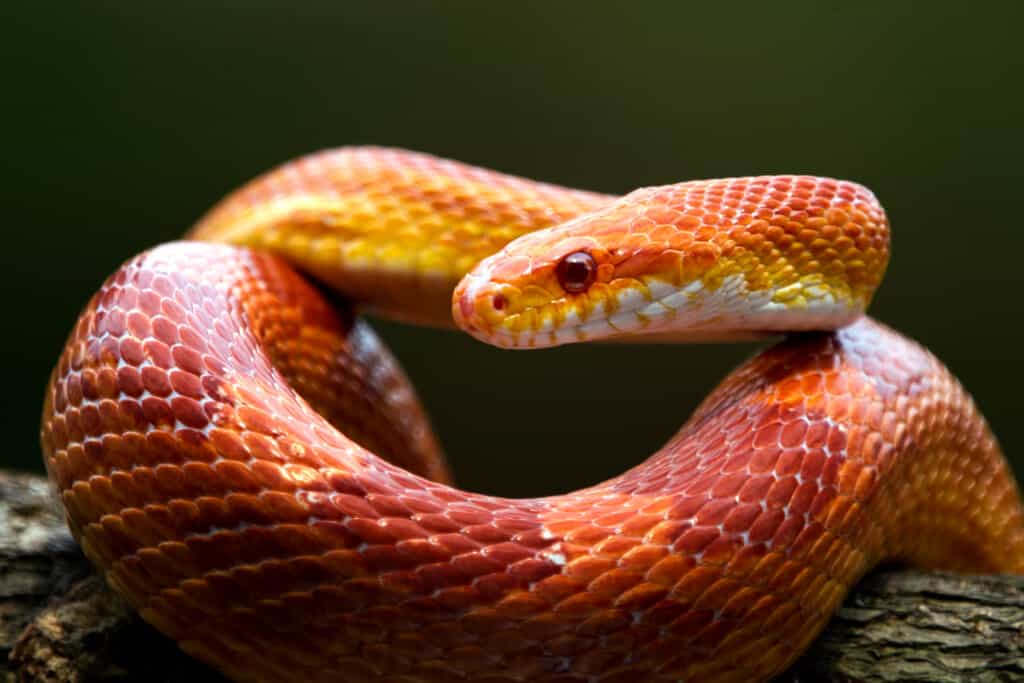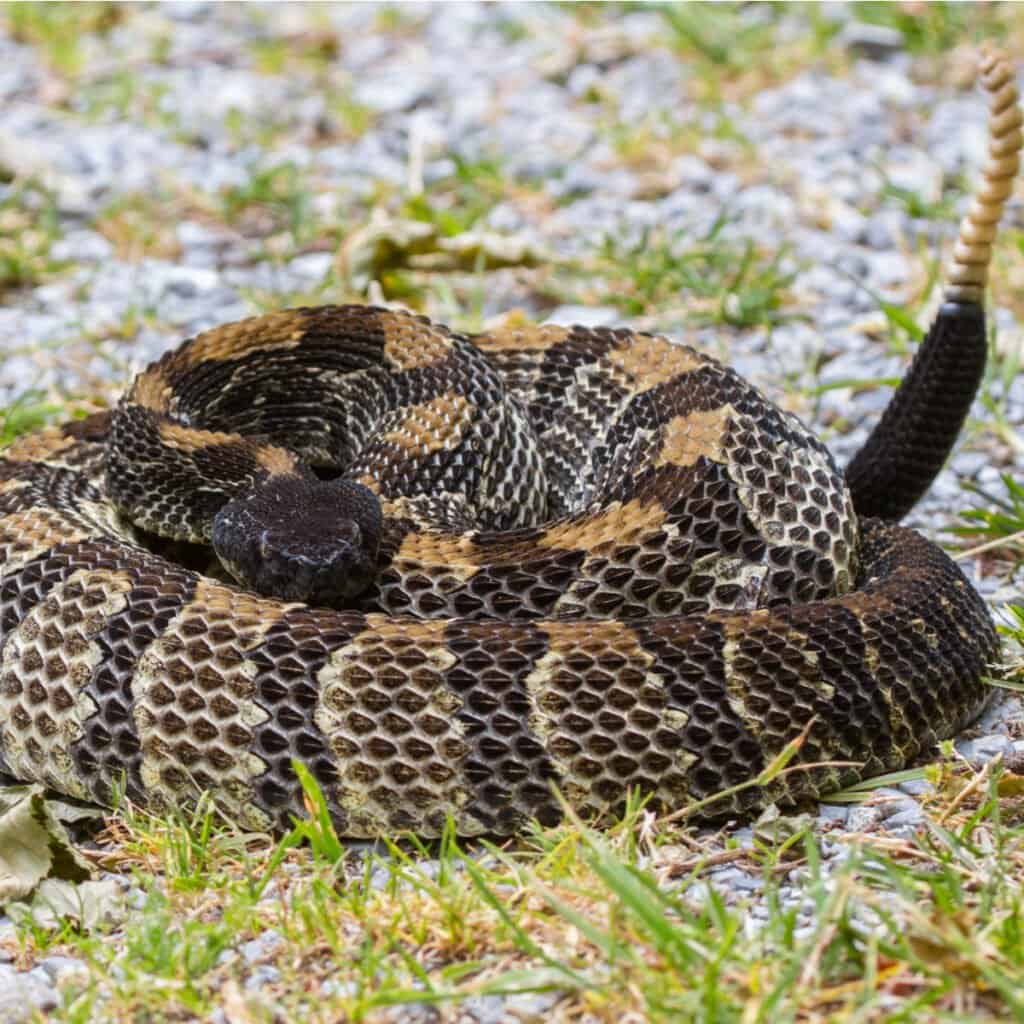Snakes live on every continent except Antarctica. The activity of snakes and their sleep behavior differs across the species. But are snakes nocturnal or diurnal? We delved into the nighttime and daytime behaviors of snakes to learn about their nocturnal and diurnal conduct.
The Sleep Behavior of Snakes Varies Across Species
Different snake species can be strictly diurnal, crepuscular, or nocturnal. For example, a black mamba is a diurnal snake, a ball python is nocturnal, and a corn snake is crepuscular. Snakes may be diurnal, crepuscular, or nocturnal for various reasons. Some are naturally active at certain times due to their genetic heritage. In contrast, others have had to adapt their sleep behavior due to food resources, environment, and potential danger. The length of their sleep cycles also differs across species.
Sleep Patterns of Snakes, Whether Nocturnal or Otherwise
Snakes may experience REM sleep and slow-wave sleep. When snakes enter REM sleep, their brain activity increases, and their sleep is less deep. At the same time, snakes cannot move their large muscles in this sleep state as they are temporarily paralyzed. REM sleep usually occurs about an hour and a half after they go to sleep. The first REM stretch lasts about 10 minutes. Each subsequent REM period becomes longer and longer. Slow-wave sleep, known as deep sleep, is the stage of sleep in which snakes are most restful. Their brain waves are slow during deep sleep, and their activity is in sync, according to the results of EEG monitoring. During this time, the snake’s heart rate and respiration rate drop significantly, and the muscles relax.
The Sleep Behavior of a Diurnal Snake
The black mamba is a large, diurnal snake that lives in sub-Saharan regions in Africa. These poisonous snakes sleep primarily at night, returning to safe hiding places from predators and humans. As the sun rises, these snakes become active. This behavior results from their cold-blooded nature and reliance on the sun’s heat to regulate their bodies. These snakes look for rocks and sunny areas to bask, but if the temperature is too high, they may seek shade and become dormant.
Black mambas have excellent eyesight, which helps them find and track prey when hunting. Their sense of smell is also highly developed. These and other snake species use this sense primarily to locate females during the mating season.

Cormac Price/Shutterstock.com
Nocturnal Snake Sleep Behavior
Ball pythons sleep for 20 to 23 hours each day. This snake sleeps most of the day because of its size and diet and because it is nocturnal. The sleep pattern of the ball python is typical for predators that must conserve energy to digest their food correctly. Ball pythons swallow their prey whole when feeding. This eating behavior forces the digestive system to take longer to break down the meal entirely. Ball pythons spend most of this process sleeping as they use up an enormous amount of energy.

Deb Davis/Shutterstock.com
Brilles Instead of Eyelids
It is difficult to tell when a ball python is sleeping as it has no eyelids but rather a “brille” on each eye. Brilles are a layer of skin that covers the eyes but is invisible to the human eye. Ball pythons are nocturnal and spend most of their time in dark places because their eyes are sensitive to UV rays. Their daytime vision is poorly developed, unlike their night vision. Poor daytime vision makes daytime activities challenging, yet they have another unique sense: detecting infrared thermal radiation. This sense, combined with their sensitivity to ultraviolet light, means these reptiles have excellent night vision.
The Crepuscular Snake’s Sleep Behavior
Corn snakes are active at dusk and dawn, meaning they are crepuscular. Wild corn snakes usually have two sleep cycles. When kept by humans as pets, they will only keep to their natural cycles if they are comfortable in their habitat. Corn snakes are active twice a day. Their first sleep cycle ends at dawn before they begin hunting. After eating and locating a hiding place, corn snakes will sleep all day until dusk. If you have pet corn snakes, it is necessary to monitor their sleep. If your snake isn’t engaging in these two cycles, it’s a sign that it isn’t comfortable in its habitat. Owners should provide low lighting and a calm environment for their snake to feel safe and relaxed in its enclosure.

Kurit afshen/Shutterstock.com
No Eyelids
Corn snakes don’t have eyelids, which is why many people wonder how they sleep. Whether nocturnal, diurnal, or otherwise, corn snakes and all other animals sleep because their brains need to rest. Snakes even sleep with their eyes “open,” making it difficult to tell if they are conscious or alert. But corn snakes sleep with their retinas closed. In other words, the retinas prevent light from entering their eyes. When their retinas are closed, they can’t see, even though it appears their eyes are open and fully functional. Consequently, if a snake is not flicking its tongue or is immobile for an extended period, it is probably asleep. If your corn snake is still and does not move or react when you lift the lid of its enclosure, it is most likely in a deep sleep.
Where Do Snakes Sleep?
Snakes like to sleep in hidden or protected areas that are not exposed to cunning predators. Still, the location of their sleep site depends on the species. For example, water snakes live close to water, and vine snakes prefer to live in or near forests. However, there are some areas and buildings where snakes enjoy sleeping. Rocks are a favorite sleeping spot; you can often catch snakes dozing or resting under large rocks. Snakes sleep under logs, branches, burrows, and abandoned buildings.
Snakes Rarely Sleep in the Same Place
In the wild, snakes seldom stay in the same place for long, selecting different places to rest, so they are not easy targets for predators. Some animals hunt snakes, so these reptiles must actively avoid predators. However, some snakes, such as timber rattlesnakes, return to their birthplace yearly for brumation, a process similar to hibernation. Many snakes brumate and can become sluggish and utterly immobile during the cold season.
These animals usually find winter quarters in isolated areas in the wild where they won’t be disturbed. Burrows, crevices, shelters, and leaf litter are all excellent places where snakes can brumate in the wild. Some temperate species can even brumate in water. These timber rattlesnakes also tolerate several snakes to share their sleeping spots. For instance, racer snakes may share the timber rattlesnake’s sleeping space. Also, racer snakes take advantage of the brumating rattlesnakes to eat its babies while the parent sleeps.

Frode Jacobsen/Shutterstock.com
Where Do Snakes Sleep in Winter?
In winter, temperatures drop significantly, with days of cold rain and freezing snow. Snakes rarely come out at this time of year. The main reason is that these reptiles become sluggish when exposed to temperatures below 60 degrees Fahrenheit. In winter, temperatures can drop to minus 70 degrees Fahrenheit for long periods, making it impossible for snakes to survive. As a result, snakes go dormant for several weeks to four months. This behavior is similar to hibernation but is called brumation and allows cold-blooded animals to survive the weather. Snakes brumate in shelters or a hibernaculum.
Nocturnal vs. Diurnal: What’s The Difference?
Navigate to Nocturnal vs. Diurnal: What’s The Difference? for further information about the nocturnal and diurnal phenomenon in various living creatures.
Up Next
The post Are Snakes Nocturnal or Diurnal? Their Sleep Behavior Explained appeared first on AZ Animals.
from Animal News, Facts, Rankings, and More! - AZ Animals https://ift.tt/QOPhp9H